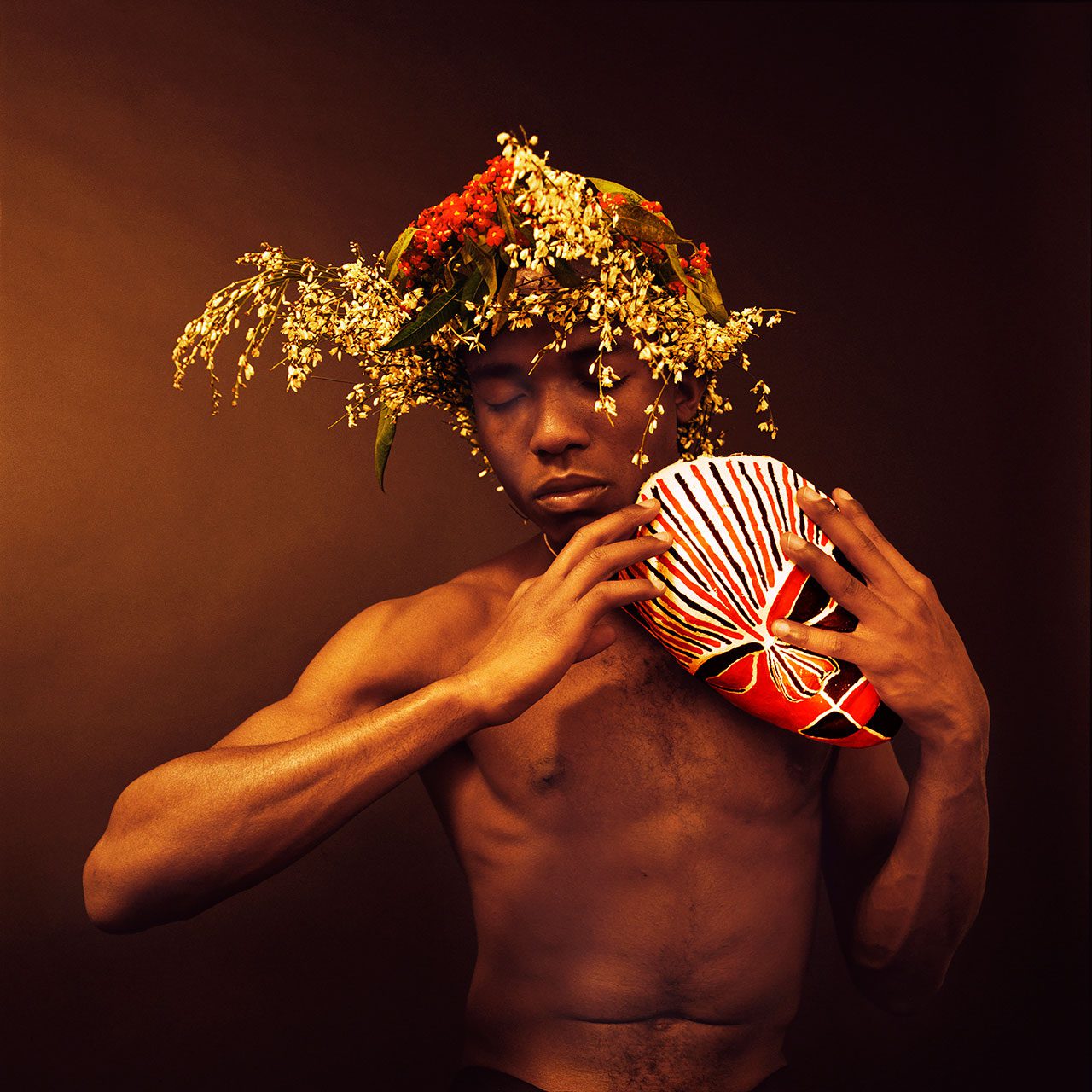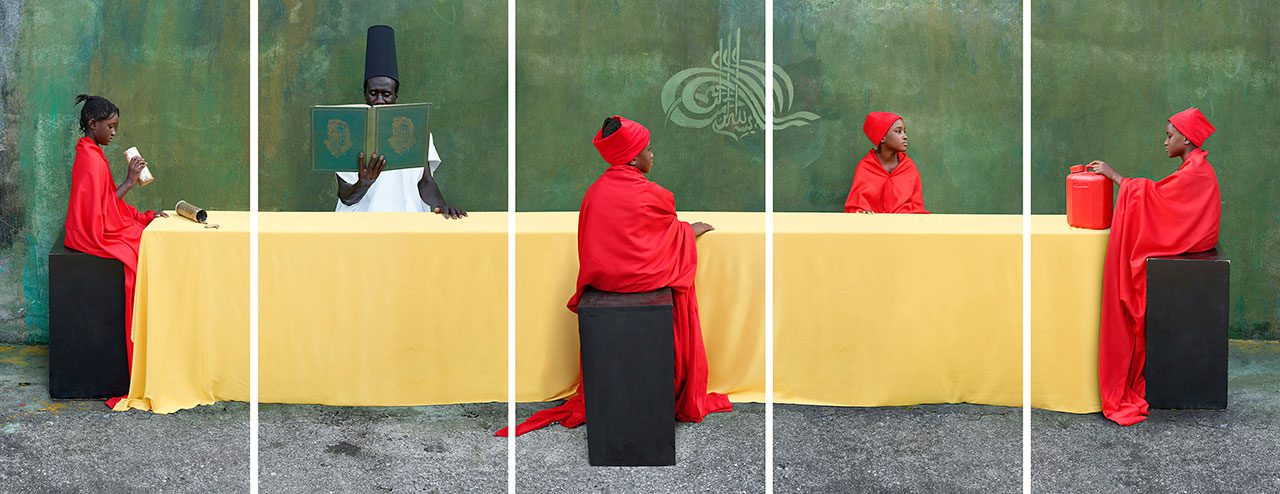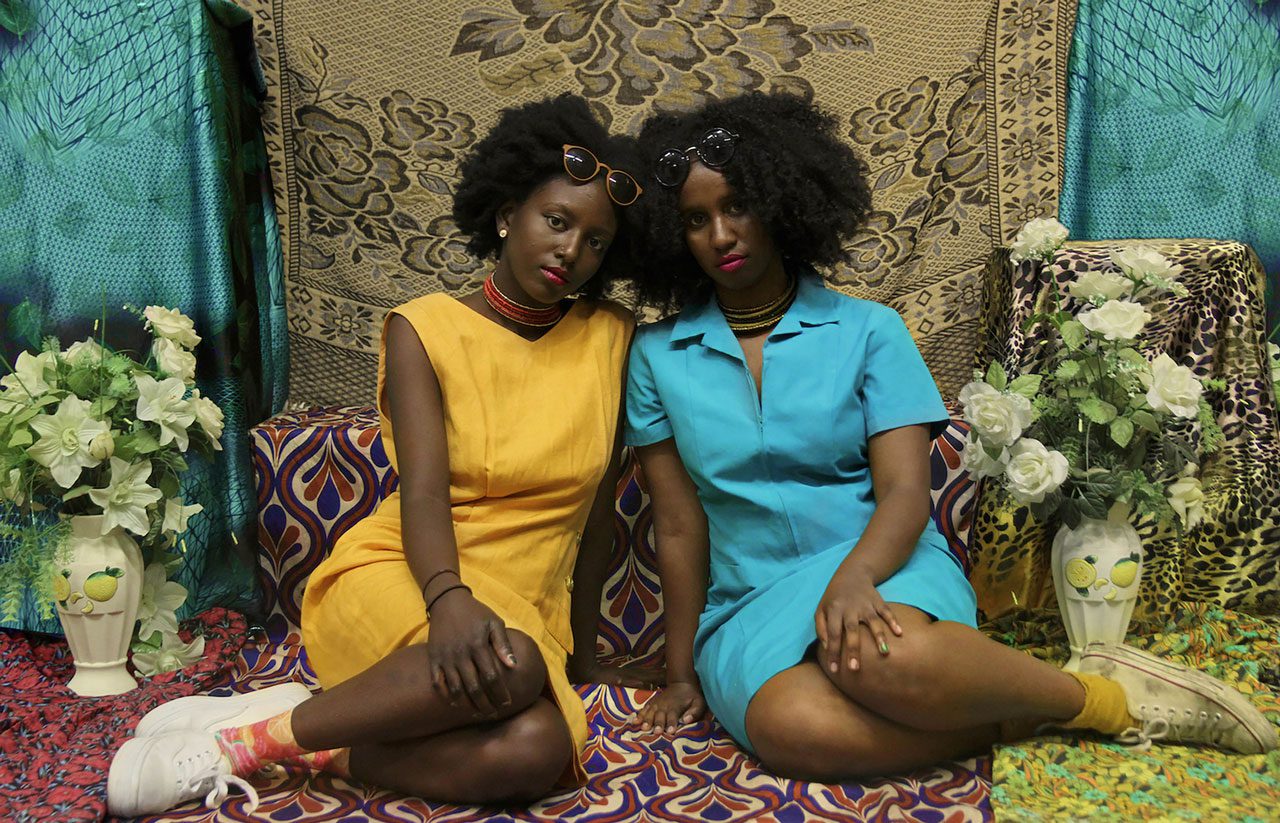PHOTO: A World In Common-Contemporary African Photography, Part II
The exhibition “A World in Common . Contemporary African Photography” presents twenty-three African and African diaspora artists from different generations and geographical contexts. Inspired by Africa’s rich cultures and its current sociopolitical landscape, the exhibition refers to the philosophy of Cameroonian scholar Achille Mbembe, who calls for us to imagine “a world in common” by “thinking the world from Africa” (Part I).
By Dimitris Lempesis
Photo: C/O Berlin Archive
In the exhibition “A World In Common – Contemporary African Photography”, over one hundred works challenge the western-oriented conception of the world, exploring alternative historical narratives that are deeply rooted in the diverse experiences, philosophies, and knowledge systems of the African continent. The exhibition examines how traditional forms of expression and spiritual practices have been maintained for years. The artists use photography and video to link aspects of history with the present. Their works demonstrate the central role that self-representation continues to play in the production of images as an expression of cultural resilience. Consisting of three chapters, the exhibition presents contemporary perspectives on cultural heritage, spirituality, self-representation, and climate justice. The show aims to highlight common artistic visions that reimagine Africa’s stories and redefine its place in the world. The exhibition also addresses the profound consequences of the global climate crisis and globalization, which transforms both landscapes and communities. The topics of migration and climate activism are assessed in bold and imaginative ways, with artists inspiring us to visualize a future in which social justice and ecological responsibility are interlinked. Viewers are invited to imagine a world that exists beyond the limits of colonial control and imperialistic exploitation. The chapters are: “Identity And Tradition-Queens, Kings And Gods”: From the 16th century until well into the 19th century, more than 10 million Africans were enslaved, and their cultural heritage destroyed. This history of slavery, violence, and colonialism culminated in the 19th century. During the 1884–1885 Berlin Conference, European industrial powers like Britain, France, Germany, and Belgium divided Africa and established colonial boundaries. Although several African peoples fought against colonial occupation, by 1914 European powers had conquered ninety percent of African territory through aggressive diplomacy, extreme racism, and the use of automatic weapons. Britain alone gained control of nearly a third of the continent. The artists in this first room honour the traditional leaders who resisted this colonial violence. European rulers divided territory without regard to indigenous populations, depriving local rulers of their authority. Nevertheless, many kings and queens continue to play an important role in many African societies. The work here reveals the rich heritage of kingdoms such as the Yoruba (Nigeria), which can be traced back to the ancient Yoruba capital and mythical birthplace of humanity, Ilé-Ife. The images draw attention to issues of sovereignty and independence that have permeated postcolonial Africa. The works do not show a nostalgic longing for the past. Rather they consider how ancestral knowledge, heritage and traditions continue to shape the present. “Counter Histories Family Portraits”: The second chapter of the exhibition focuses on the camera’s ability to challenge the colonial gaze and produce alternative images of the past. In the 19th century, photography became a valuable tool for colonial powers. Ethnographic images of African peoples and landscapes were distributed through postcards and magazines. These groups were often portrayed and marked as “different” and “inferior” from Europeans, leading to the creation of racist stereotypes that validated colonialism. The artists in this section confront this history through the theme of “Family Portraits”, a subsection that explores Africa’s rich studio culture, which began in the 1840s in many coastal cities. Taken by travelling photographers of African and European descent, the practice spread to inland capitals where the growing clientele sought to portray itself whilst conforming to a Victorian style. During the 1950s and 1960s, when many African countries gained independence, studios played an important role in shaping a new postcolonial identities. They allowed those portrayed to play with their appearance and to show the version of themselves they aspired to. The photographers in this room celebrate family portraits as a visual tradition, a form of self-representation, connection and coming together. Following the end of World War II, African nations demanded their independence from European powers. In 1957, Ghana became the first sub-Saharan African coun-try to gain independence from a European colonial power. Pan-Africanist leader and Ghana’s first president, Kwame Nkrumah (1909–1972) declared: “We believe in the rights of all peoples to govern themselves. We affirm the right of all colonial peoples to control their own destiny. All colonies must be free from foreign imperia- list control.” During this period of independence, colonial archives were abandoned, hidden and destroyed. However, over time, the documents, photographs and maps that where originally created to define boundaries and claim authority began to take on new meanings. As the role of archives evolved, they came to be understood not merely as repositories of historical documents but as active systems of knowledge, connecting the past to the present. The artists Délio Jasse, Samson Kambalu and Malala Andrialavidrazana engage with the archive as a place of re-experience. They address the accumulation of official documents and images and bring new stories to light, creating alternative histories. Using photo albums, passports and postcards, they highlight personal perspectives and challenge the official records of colonial governments and nation- states. This living archive introduces a new order of events in which suppressed narratives gain new currency. “Imagined Futures”: In the exhibition’s final chapter, artists contemplate how globalization and climate emergency are shaping our common futures. In times of crisis, they find inspiration in the promise of new worlds and shared dreams for a new society. Dispensing with colonial visions of Africa, they turn to the “planetary”, where humans, technology and the natural world come together to form interconnected ecosystems. Artists explore how urbanization has transformed the continent and its ways of life. Foreign and domestic investment and higher-paying jobs have encouraged Africa’s young population to move to cities. Kinshasa and Lagos are now considered mega- cities, with populations over 15 million. For these artists, the city becomes a site of collective histories and a dynamic stage for the production of global networks and relations. Shifting geopolitics and plentiful resources mean Africa’s economic growth is now predicted to outpace the rest of the world. However, the exploitation of natural and human resources has left the continent caught between the promise of a brilliant future and an uncertain present. In recent years natural disasters, extreme weather and mass migration have put the future of our planet into focus. While global in reach, these issues disproportionately affect citizens of the Global South. Here, artists address this uncertainty by turning to their environment. They face the consequences of humanity’s self-destruction and explore alternative ways of being.
Participating Artists: Kelani Abass, Atong Atem, Malala Andrialavidrazana, Edson Chagas, Kudzanai Chiurai, Rotimi Fani-Kayode, Maïmouna Guerresi, Hassan Hajjaj, Délio Jasse, Julianknxx, Samson Kambalu, Kiripi Katembo, Lebohang Kganye, Mário Macilau, Sabelo Mlangeni, Santu Mofokeng, Fabrice Monteiro, Aïda Muluneh, Wura-Natasha Ogunji, George Osodi, Dawit L. Petros, Zina Saro-Wiwa, and Khadija Saye.
Photo: Kiripi Katembo, Evolution, 2008–2013, from the series Un regard © Fondation Kiripi Katembo Siku. Courtesy MAGNIN-A Gallery, Paris
Info: C/O Berlin, Amerika Haus, Hardenbergstrasse 22–24, Berlin, Germany, Duration: 1/2-7/5/2025, Days & Hours: Daily 11:00-20:00, https://co-berlin.org/





Right: Hassan Hajjaj, Rider in Pink, 2000/1421, framed photography © Hassan Hajjaj. Courtesy of Hassan Hajjaj Studio

